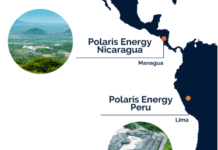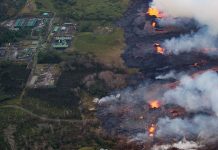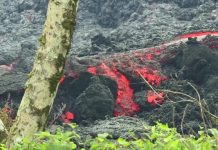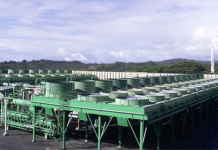Tom Konrad CFA
My take-aways from the GEA Finance Forum
After a long time lost in the proverbial desert of high capital costs and few financiers willing to step up, a number of geothermal companies made breakthroughs last fall. The Department of Energy (DOE) loan guarantees for geothermal power development began to come through, and financiers were beginning to step up.
- Nevada Geothermal Power (NGLPF.OB) announced a deal with Ormat (ORA) in which Ormat will earn a share of Nevada Geothermal’s Crump Geyser property by paying for and financing most of the development costs, as well as doing the work.
- US Geothermal (HTM) secured financing from Enbridge for their Neal Hot Springs project.
- Ormat retracted three applications for DOE loan guarantees, instead choosing to pursue commercial financing. This was good news because it shows that at least some lenders don’t need loan guarantees to finance geothermal projects.
- Ram Power’s (RPG.TO) closing on financing for Phase II of its San Jacinto project.
With this background, I entered 2011 feeling optimistic about the prospects for geothermal power companies, and even included two geothermal developers in my 10 Clean Energy Stocks for 2011.
So far, 2011 has not been kind to geothermal stocks.
- There has been an ongoing nationalist movement led by singer Björk against Magma Energy’s (MGMXF.PK) purchase of HS Orka, with rumors of possible buyout by the Icelandic government.
- Ram Power reported construction delays and higher than expected procurement costs in their Nicaraguan San Jacinto-Tizate project, requiring them to switch drilling contractors.
On February 9th, I had the opportunity to attend the Geothermal Energy Association’s (GEA) Finance Forum in New York. The main question in my mind was:
Will the rest of 2011 offer more positive news about successful financings of geothermal projects, or will the news be more political risk and construction delays?
Overall, I left with my optimism for geothermal stocks restored.
The Good
HS Orka: I was one of several members of the press to question Iceland’s President Grimmson about the rumors that the Icelandic government might force Ram Power to sell HS Orka back to the government. He repeated the current party line that the government has no intention of seizing Orka, but mostly ducked the question, saying that Magma’s President and CEO Asgeir Magnussun was the best person to answer the question. But he did mention that Magma was engaged with a group of Icelandic pension funds in negotiations to sell a share of HS Orka.
Later in the conference, Magnussun said his company was working on finalizing an agreement with the Icelandic government, in which they will agree with the government to amend the long term lease of the resource. This should allow the government to save face before the populist protests. Magnussun also said that he suspects some of the protesters are motivated not just by resource nationalism, but also by a wish to stop industrial development. The driving force for Iceland’s current industrial development is cheap renewable geothermal and hydro power, and if geothermal expansion can be delayed, so can Icelandic industrialization.
Financing: It seemed like every other person I spoke to at the conference was from some financial company interested in funding the construction of geothermal plants. It seemed clear that geothermal developers who have proven resources should be able to get the money to build plants.
In particular, there were the following encouraging developments:
- Islandbanki and Hannon Armstrong announced a joint venture (to be called GeoBanc) to provide a full service, one-stop financial shop for geothermal developers.
- Johnathan Zurcoff, VP of finance at US Geothermal (HTM) said his company hopes to close on its DOE backed loan in the next couple weeks.
- John McIlveen Research Director at Jacob Securities pointed out the significance of Enbridge’s 2010 deal with US Geothermal (HTM) to finance drilling and construction at Neal Hot Springs. This deal was significant for two reasons. First, the project was relatively early stage, with only two completed production wells, so the investment was riskier than the typical construction loan. Second, it was significant because Enbridge is an oil and gas company. He thinks we’ll see one or two more large players from outside the industry entering into this sort of deal in 2011.
- Jimmy Leung of Raymond James said he’s currently working on a $184 million geothermal financing he expects to close in the second quarter of 2011.
In other words, there is likely to be a lot of money flowing into geothermal projects in 2011, and that should be good for the stocks.
Risks for Geothermal
That said, neither drilling risk nor political risk is going away.
It’s a truism that geothermal exploration is considerably more risky than oil and gas exploration, simply because geothermal reservoirs are much more complex than oil and gas reservoirs. Using a very broad brush and oversimplifying somewhat, geothermal resources are hot fluids moving through cracks in complex geologic formations with hydrothermal features such as vulcanism, while oil and gas are typically in fairly simple sedimentary formations where an impermeable layer caps a pool of fossil resources in a relatively permeable layer below.
Given the complex geology, drilling risk will continue to be a long term feature of geothermal exploration, and it is the first risk that comes to min
d of many industry observers.
Nor is political risk going anywhere. Not only will there be continuing problems with resource nationalism, such as we are seeing in Iceland, but the United States is hardly a safe-haven, with Republican congressmen falling over each other to introduce bills to grab back any unspent ARRA money which could affect future DOE construction loan guarantees and the ITC cash grants.
On the other hand, if subsidies for geothermal are cut as part of budget cutting efforts, it will not be only geothermal, but many energy sectors. Since geothermal is one of the most economically viable renewable energy sectors, it may even emerge relatively well off. Finally, as John Pierce of Wilson Sonsini Goodrich & Rosati pointed out, the Republican-controlled House will be largely irrelevant to whatever legislation actually gets passed: it will be the Senate where the real decisions (if any) are made.
Conclusion
Drilling risk and political risk are nothing new for geothermal developers. What is new is the emergence of a new class of financiers who are willing to step up and fund geothermal projects. We saw the beginnings of this trend in 2010, and it looks like the trend will only accelerate in 2011. This can’t help but be good for the publicly traded geothermal developers who can’t fund their projects internally (the only ones that can are Ormat and Calpine Corp. (CPN).
The four I currently own are Magma Energy Corp. (MXY.TO, MGMXF.PK), Nevada Geothermal Power (NGLPF.OB, NGP.V), Ram Power Corp. (RPG.TO, RAMPF.PK), and US Geothermal (HTM). After what I learned at the conference, I’ve been adding to my holdings.
DISCLOSURE: Long MGMXF,NGLPF, RAMPF, and HTM.
DISCLAIMER: The information and trades provided here are for informational purposes only and are not a solicitation to buy or sell any of these securities. Investing involves substantial risk and you should evaluate your own risk levels before you make any investment. Past results are not an indication of future performance. Please take the time to read the full disclaimer here.








Hezy Ram seems to have called it a day.
Yes… I’m still trying to figure out what his resignation will mean, but I find it had to believe that the problems in Nicaragua and his resignation are are enough to account for knocking 40%+ off the stock price.
I’m still buying… we’ll see if I regret it in a day or three.
“Indonesia to purchase geothermal energy
march 12, 2011”
http://www.evwind.es/noticias.php?id_not=10755
I wonder if the success rate for drilling is significantly improved on the many islands of Indonesia?
It’s my understanding that drilling is risky in a new field, but after about 5 wells have been drilled, you have a much better idea of the structure of the resource, and it can be much less risky to expand generation if the resource size allows it.